#moscow school of painting and sculpture
Explore tagged Tumblr posts
Text

“Shishkin read widely during those years, reflected on the meaning of art and came to the conclusion that the artist is duty-bound to study nature and reproduce it faithfully in his work”.
- A. Savinov. Shishkin As A Painter.
#ivan shishkin#shishkin#landscape#russian art#traditional art#traditional painting#venetsianov#alexander ivanov#moscow school of painting and sculpture#XIX century art#romantic art#realism
9 notes
·
View notes
Text

Self-portrait 1896
Konstanty Gorski (Górski) (Polish painter) 1868-1934
Oil on canvas
Private Collection
Konstanty Górski (also known as Gorski) (born 1868 in Kazimierzów, died 1934 in Warsaw) - Polish painter.
He attended the Moscow School of Painting, Sculpture and Architecture
Konstanty Górski created portraits and caricatures, and rarely used historical and fairy-tale themes. He illustrated books and magazines, among others. Wędrowiec, He was an outstanding organizer of foreign painting exhibitions, for which he was awarded the Legion of Honor and the Cross of Merit awarded in Austria.
30 notes
·
View notes
Text

Happy Valentine’s Day! And early birthday wishes for Martiros Sarian (1880 – 1972) who was born on February 16, (February 28, New style) 1880.
Educated in Moscow School of Painting, Sculpture and Architecture, Martiros Sarian was one of the most widely known Armenian painters.. French poet Louis Aragon once called Sarian “a painter of happiness” (“Soviet Art” Magazine, 1960, No 3, pp 7).
Sarian painted blurred and ghost-like forms, creating dream-like works depicting the poetic nature of the scenes. As seen in this work entitled “Love, Fairy Tale,” the figures are also a blur of ages, genders, and races.
In Armenian culture, the gazelle (or sometimes Caspian red deer, also called “maral”) stands for beauty. “Gazel, derived from the Arabic ‘ghazăl,’ is an image most commonly used in Arabic literature through its association with female beauty. Especially in Arabic love poetry, it is frequently compared to the beloved. Both the gazelle and the maral are often used in manuscripts and poetic literature as symbols of a lover or beloved.” (Google Arts & Culture: East in Fairy Tales and Dreams: The Magical and Dreamy Caucasus by Martiros Sarian)
Love, fairy tale Alternate Title: Amour, conte de fées Sarian, Martiros, 1880-1972, Armenian [artist] Watercolor on paper 24 x 17 cm. Culture: Armenian 1906 Repository: Martiros Sarian Museum, Yerevan, Armenia HOLLIS number: olvwork301573
This image is part of FAL’s Digital Images and Slides Collection (DISC), a collection of images digitized from secondary sources for use in teaching and learning. FAL does not own the original artworks represented in this collection, but you can find more information at HOLLIS Images.
#Valentinesday#Bemyvalentine#Valentine#MartirosSarian#Armenianpainter#Armenianartist#Watercolor#HarvardFineArtsLibrary#Fineartslibrary#Harvard#HarvardLibrary#digitalimages#harvardfineartslibrary#fineartslibrary#harvard#harvard library#harvardfineartslib#harvardlibrary
78 notes
·
View notes
Text
As western nations fail to deliver the weapons and ammunition Ukraine says it needs, Russia is rapidly advancing in the east of the country using its superiority in air power and artillery
The Russian war plane flew above Avdiivka, the Ukrainian city abandoned this month by Ukrainian forces. It looped above the new eastern frontline. And then it dropped a bomb, not far from where Maryna Haivoronska was standing in the village of Novoselivka Persha. “I saw the jet in the sky. It was 9.30am. The bomb landed 500 metres away from me. I threw myself to the ground. My legs are still trembling,” she said.
Since capturing Avdiivka Russian forces have been moving rapidly forward. Earlier this week they overran two settlements down the road from Novoselivka, where Haivoronska is the mayor. Their tactics are brutally effective. First, fighter jets carpet-bomb the area. Then, assault groups using armoured vehicles overwhelm Ukraine’s new and vulnerable positions.
Two years after the full-scale invasion, Russia is close to achieving a strategic breakthrough in the east. It is happening in a rustic landscape of brown fields, wispy yellow feather grass and pyramid-like slag heaps. Ukrainian forces clatter up and down in green Humvees along dusty country roads. But they have no answer to Russian planes, which patrol menacingly above them in an azure haze, leaving decorative curlicue trails.
Ukrainian troops have not given up. They have shot down 10 enemy Sukhoi jets in as many days. But overall they lack tactical-level air defences, which would allow them to chase away Russia’s marauding squadrons, as they move into position above the occupied city of Donetsk. The Ukrainians have little artillery. The Russians have lots. The sound of incoming Grad missiles can be heard every few minutes along the Ukrainian frontline: a terrible thunder clap.
The heavy glide bomb that fell on Novoselivka’s School Street wrecked a private two-storey house. Miraculously the family inside – Alyona Movchan and her two children – survived. The village has been hit before. In 2023 a rocket flattened the main square, destroying everything apart from a garish Soviet war memorial with a silver-painted sculpture of a wounded soldier. Two people were killed. Another died from a heart attack.
Locals say decisions being taken far away – or not, in the case of US Republicans blocking a crucial $61bn (£48bn) package to Ukraine – are existential for them. Their homes and communities are being swallowed up. “We are on our knees, begging the US and the UK for help,” Haivoronska told the Guardian. She added: “I’m from Avdiivka. I believed the city would hold. We lost it because our guys didn’t have planes or enough ammunition.”
Some residents are reluctant to leave, despite the fact the Russians are 10km away, and getting closer. The mayor said 18 people remained. There is no electricity or gas. The village shop – Natalie’s – shut this week. Its disco, kindergarten and surgery closed long ago. In the neighbouring village of Zhelanne 454 people hang on. On Tuesday humanitarian aid was given out at its school. Moscow has bombed the building three times, ripping off its southern facade.
“I have a bag packed. But where am I supposed to go?” 63-year-old Liubov Hryhorivna wondered. She explained: “I have no money. Our pensions are small. I love my country and I don’t want to leave.” What did she think of Vladimir Putin, who has vowed to ‘liberate’ the parts of Donetsk oblast not under Russian rule? “He started with Donetsk in 2014. Now he wants everything. His appetite has grown. He’s our enemy,” she said. Could Ukraine win? “I don’t know,” she replied.
Hryhorivna collected a gas stove, a solar-powered torch and a grey blanket. She said she was living in a flat belonging to her husband’s late parents, after a missile hit her own property, blowing out the windows. “I would like to stay alive so I can see my grandchildren,” she said. Of the 30 people who picked up supplies, one said he supported Russia. “I believe in peace,” Anatolii Anatoliiovych said, predicting: “Russia will win.”
France’s president, Emmanuel Macron, this week convened an emergency summit in support of Ukraine, alarmed by the stalemate in the US Congress, where participants agreed more had to be done. The EU, however, has failed to make good on its pledge to give Kyiv a million artillery rounds. Deliveries of weapons – tanks, air defence systems and long-range artillery – have typically come too late, and only after indecision and government caution.
Ukrainian troops, meanwhile, have hastily constructed a new fortified line designed to thwart further Russian advances. It stretches between the villages of Tonenke, Orlivka, and Berdychi. There are trenches. And a body of water. But they offer less protection than the now abandoned concrete bunkers inside Avdiivka’s industrial zone and its sprawling coke factory. These helped Ukrainian combat units withstand Russia and its proxies for a decade. Would the new defences work?
7 notes
·
View notes
Text

'Portrait of a Fisherman' by Aleksey Mikhailovich Korin (1865 - 1923). Korin was a Russian genre painter. and a Professor at the Moscow School of Painting, Sculpture and Architecture.
11 notes
·
View notes
Text
Okay. Time to write headcanons about Rusreal Uppermoons
Enjoy a cringe!
Part 1 — Gyutaro and Daki/Ume
Usual headcanon - their age equal to the age when they canonically became demons.
They adopted by Douma in... More younger age. (Ume was 9. Gyutaro was ±15.)
Ume asks(Demands) Douma to buy her expensive things. So she have last Iphone, Ipad, MacBook, own tv in good designed room.
Ume is Semi-professional fashion model. She was in Paris and Saint Petersburg
Likes to sing, but doesn't like to someone see her singing
Her grades at school range from "4" ("B") to "5"("A")
Hate that one man who didn't let her shop in his Wip store(RusReal Tengen is owner😜)
Always mean to almost everyone at school, except her two friends.
Her favorite school subject - Music, English and Spanish. And she is Study in the 7th grade. (7Б класс. Классный руководитель ведёт физику.)
Gyutaro graduated from high school. And he graduated in 9th grade(usual in Russia) Now he is studying at a technical school.
Gyutaro works in Yandex food© as delivery man
Douma gifted Gyutaro a very expensive car on his 18th birthday
Gyutaro drives very well.
He studied and graduated from the same school in which Daki studies now.
His grades was.. Bad.. sometimes "2"("F") sometimes "4"("B")
(Since in Russia there is a five-point grading system, I write like this)
Almost everything else like in canon😋
Part 2 — Gyokko
Sculptor and Painter. Like modernism a lot.
His sculptures and paintings expensive.
But almost all his paintings - on pots so he doubled a price for them.
He thinks he surpassed Picasso
Thinks he is friends with Douma. But for Douma this friendship is a fake.
Doesn't like twins(Tokito twins) because one of them(Muichiro) said what all Gyokko's works Only garbage and the price for garbage should be zero. He also repeatedly called all Gyokko's sculptures a piece of clay.
Strange, but rich. He usually wear a mask what look like his Canon face. Have a big aquarium with fishes.
Like fish. like fish very much.
Dislikes a foggy weather.
Thinks every human is his fan.
Has an expensive apartment in Moscow-city.
Rarely play Gardenscapes
Part 3 — Hantengu and clones
All of them - different person.
Hantengu most like a grandpa for younger clones/Grandkids basically.
Has a quick mood changes.
Kith with Douma.
Clones mostly same. But.. But as everyone here - Humans.
In same class as RusReal Tanjiro, Inosuke, Zenitsu, Kanao and Genya
Urogi have an eagle pet. Well. If Urogi has a pet. Then everyone in this fuckin "family" has that pet.
They ages going like: Hantengu-Sekido-Karaku-Aizetsu-Urogi-Zohakuten
Zohakuten same age as Nezuko, Senjuro, Muichiro, and Rui (14 ok? I wanted, I made a RusReal with it)
The above, except Muichiro, study in the same class.( 7А, классный руководитель - учитель географии)
[i want to say what Nezuko and Senjuro sitting at the same desk(In Russia, desks for two people)]
Urogi and Karaku talks in class usually and loudly. Thats why they were separated from each other to opposite sides of the classroom.
only Aizetsu are excellent student. Of all of them.
Hantengu was born in Pushkino. And unknown about his kids, but known what he have grandkids. How and why? Don't ask him. He doesn't talk much to strangers
For now whats all! Soon I'll make three other parts!
#kny daki#kimetsu no yaiba#kny gyutaro#kny gyokko#kny hantengu#kny urogi#kny karaku#kny aizetsu#kny sekido#headcanons#rusreal#alternative universe#They not demons in this Au#Help music plays in my head 25/8#demon slayer
5 notes
·
View notes
Photo
Igor Shelkovsky (Russian/Soviet -French, b. 1937)
...His parents were arrested during Stalin's repressions. He lived his early years in prison with his mother and afterwards with his grandmother in Moscow. After graduating from art school, he worked as a restorer of ancient Russian paintings. He started to create more sculptures. In 1976 he emigrated to Paris. in the emigration he dedicated most of his time to issue "A-YA" - magazine about unofficial art in the Soviet Union. The artist now lives in Moscow and Paris. - https://www.brykina.com/artists/igor-shelkovsky/about

Igor Shelkovsky
129 notes
·
View notes
Text

Kuray, 1934. Oil painting by Nikolay Rusakov.
Nikolay Rusakov was born in 1888 in the village of Pisklovo, Chelyabinsk district (Russia), the Orenburg governorate.
In 1913, he completed a full course in the department of painting of the Kazan Art School at the Imperial Academy of Arts. At the Moscow School of Painting, Sculpture and Architecture, Rusakov studied with the famous painter Konstantin Korovin.
Rusakov became the first Chelyabinsk artist who received a professional education in the Russian capital, and he was engaged in helping painting flourish in his hometown.
Read more
0 notes
Text
Katarzyna Kobro

Katarzyna Kobro is a polish sculpture born in Russia 1898, She studied in Moscow School of painting and went on to teach sculpting and ceramics in Smolensk. Her sculptures stand out significantly as they were apart of the avant-garde movement, distinguishable by there bright colour and clear use of abstractionism, the shapes are particularly caught my attention.
As previously mentioned I hope to create more space in my works and K. Kobros piece 'Spatial Composition 4' uses its space (as the name suggests) and composition to create an abstract geomtrical sculpture.
This work has inspired me to create something similar, however I entend to make the work visible from 360 degrees. I hope to use line and space to make a visual illusion of some form. Th ehopes is that it will be a small design in a big space, allowing the lights and shadows to move and change as an audience moves around it.
0 notes
Text
Museums - Museen
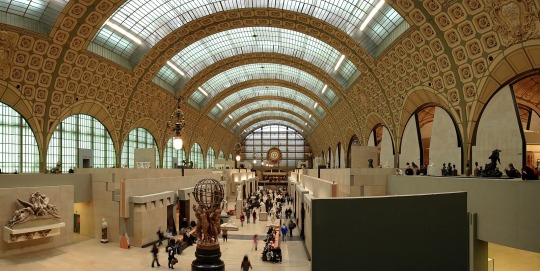
Source: Benh (2007), Main Alley Of The Musee d‘Orsay, Wikipedia, CC BY-SA 3.0 https://en.m.wikipedia.org/wiki/File:MuseeOrsay_20070324.jpg

Source: Musee d‘Orsay, Self-portrait, Vincent van Gogh, 1889, Public Domain
Travel guides usually list a variety of museums for each place that you can or even should visit - if you want to know where we come from, what is important to us or what defines us or has defined us at some point. I also strolled through one or the other museum because I saw it as part of my education. I just wanted to know and understand. It often took me to art museums - although I didn't have any real access to this "kind of art“ at the time (music, literature and movies rather touched my soul). And nowadays architecture and sculptures fascinate me even more than painting…as well of course landscapes: there is probably no more creative artist than nature itself. When visiting an art museum, it soon became customary for me to buy a museum guide to leaf through at home from time to time. There are a few museums that have stuck in my mind or that I simply like:

Source: Munch Museum, The Scream, Edvard Munch, 1893-1910, Public Domain
Musee d'Orsay (Paris): Accommodated in a beautiful old train station building, the museum contains an extensive collection of French Impressionists. Actually a "must" for everyone who likes this art epoch.
Munch Museum (the former museum in the Toyen district of Oslo): was a small, cute museum entirely devoted to the work of Edvard Munch. I was particularly impressed by the small presentation of pieces from his life - especially his first pictures from early childhood. If children of this age are still drawing stick figures, he has already drawn in perspective. So his talent showed quite early. Painters often seem to perceive the world differently than ordinary people. There is a similar presentation about van Gogh in the Van Gogh Museum in Amsterdam.
Prado (Madrid): My former school once disposed old school books - including old history books. These contained many beautiful illustrations and contemporary paintings - almost art books. I particularly liked leafing through the book about the Napoleonic Wars - because of my penchant for Napoleon. It also contained a painting by Francisco de Goya: "The Third of May 1808 in Madrid". Maybe why I often got stuck on it, because it reminded me of a scene from "War and Peace" (by Tolstoy): the shooting of alleged arsonists in Moscow. The cruelty of war: you die because you just took a wrong turn at the corner. That's why I wanted to go to the Prado in Madrid - to see this painting.
Hermitage (St. Petersburg): The museum is accommdated in the Winter Palace of the Romanovs. The building itself is a feast for the eyes - and of course the unmeasurable art treasures inside of it. We were particularly fascinated by the oversized vases made entirely of mosaics - something we had never seen before.
Roman Forum (Rome): Rome itself is actually an open-air museum - but the Roman Forum reinforces this impression. Many know the history of Rome from class, books (e.g. Colleen McCullough's series on the last years of the Roman Republic) or movies. You stroll through the streets, squares and gardens and regularly meet "old friends". You can really feel the importance and history of the place.
National Maritime Museum (London): The museum is the largest museum of maritime history in the world - a dream for anyone who is interested in that. Models of historical ships enough.
USS Constitution (Boston): A 19th-century US Navy frigate (sailing ship) - still "in service" although now only serving as a museum ship. The crew tells visitors the history of the ship in a lively and funny way, making a visit a fun affair.
Natural History Museum (London): The museum is one of the largest natural history museums in the world and is also located in a beautiful Romanesque-Byzantine building. When I visited the museum, there was a special exhibition on Charles Darwin. You could immerse in Darwin's world of ideas through carrying out experiments and by that understand his findings. This made science tangible. Incidentally, the Technical Museum in Munich follows the same approach: you understand physical phenomena by carrying out experiments (e.g. the behavior of waves at fixed or open ends).
Kennedy Space Center (Cape Canaveral): old rockets, space capsules, launch pads - a look into the history of the US space program and the preparation of current space projects. So much positive energy and enthusiasm for science and engineering. I was lucky that I was able to witness the launch of a space shuttle during my stay there (Space Shuttle Atlantis, Mission STS-86 to the Mir Space Station). A goosebump moment.
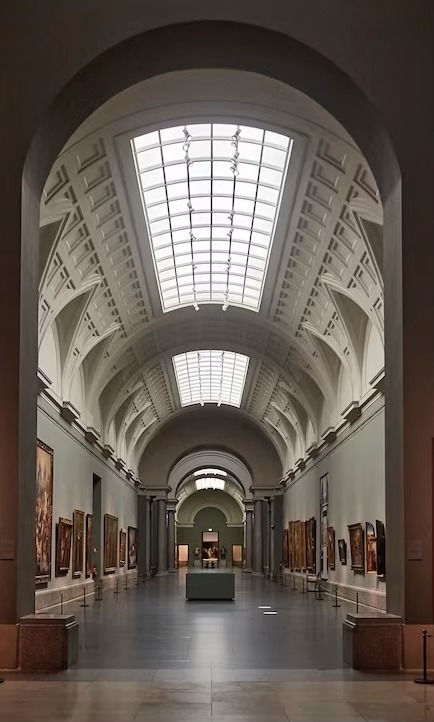
Museo Del Prado
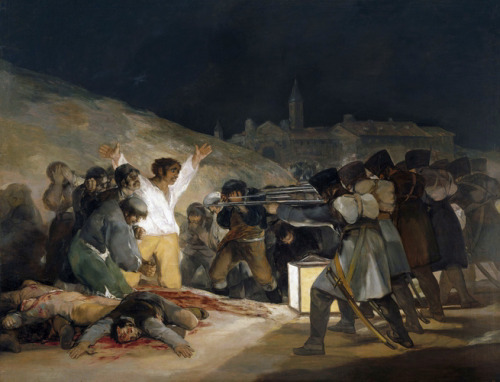
Source: Museo Del Prado, The Third of May 1808 in Madrid, Francisco de Goya, 1814, Public Domain
Reiseführer listen normalerweise für jeden Ort eine Vielzahl an Museen auf, die man besuchen kann oder sogar sollte - wenn man wissen möchte, wo wir herkommen, was uns wichtig ist oder uns ausmacht oder irgendwann ausgemacht hat. Auch ich schweifte durch das ein oder andere Museum, weil ich es als Teil meiner Bildung ansah. Ich wollte wissen und verstehen. Oftmals führte es mich in Kunstmuseen - auch wenn ich zu jener Zeit noch keinen richtigen Zugang zu dieser „Art von Kunst“ hatte (Musik, Literatur und Filme brachten meine Seele eher zum Schwingen). Und Architektur und Skulpturen faszinieren mich heutzutage dabei mehr als die Malerei….sowie natürlich Landschaften: es gibt wohl keinen kreativeren Künstler als die Natur selbst. Beim Besuch eines Kunstmuseums wurde es für mich bald usus, einen Museumsführer zu erstehen, durch den man auch ab und an zu Hause blättern kann. Es gibt ein paar Museen, die mir persönlich besonders im Kopf hängen geblieben sind oder die ich einfach gern mag:

Hermitage
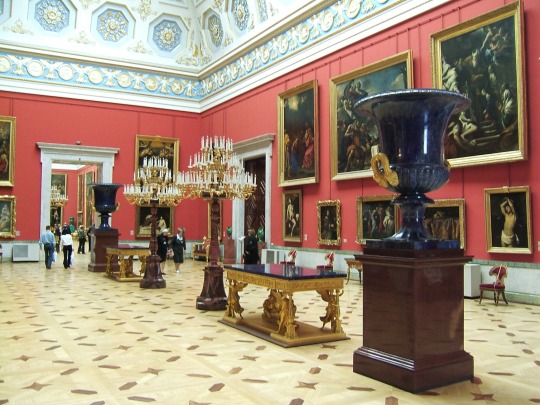
Hemitage: Oversized Vases
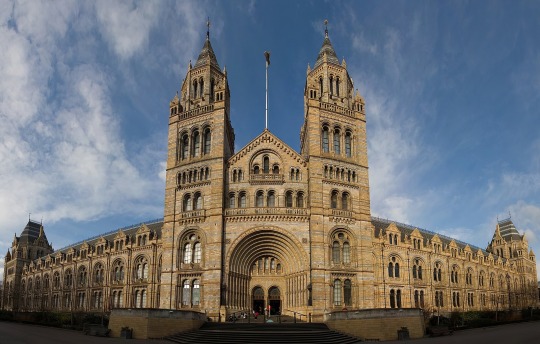
Source: Iliff, David (2006), The Natural History Museum, Wikipedia, CC BY-SA 3.0 https://en.m.wikipedia.org/wiki/File:Natural_History_Museum_London_Jan_2006.jpg
Musee d‘Orsay (Paris): Das Museum befindet sich in einem wunderschönen alten Bahnhofsgebäude und enthält eine umfangreiche Sammlung französischer Impressionisten. Für jeden, der diese Kunstepoche mag, eigentlich ein „Muss“.
Munch Museum (das ehemalige Museum im Stadtteil Toyen in Oslo): war ein kleines, schnuckeliges Museum, das komplett dem Werk von Edvard Munch gewidmet war. Besonders beeindruckt hat mich die kleine Präsentation von Stücken aus seinem Leben - insbesondere seine ersten Bilder aus früher Kindheit. Wenn Kinder in diesem Alter noch Strichmännchen malen, hat er schon perspektivisch gezeichnet. Sein Talent hat sich also recht früh gezeigt. Maler scheinen die Welt oft anders wahrzunehmen als gewöhnliche Menschen. Eine ähnliche Präsentation gibt es auch über van Gogh im Van- Gogh-Museum in Amsterdam.
Prado (Madrid): Meine ehemalige Schule entsorgte einmal alte Schulbücher - darunter auch alte Geschichtsbücher. Diese enthielten viele schöne Illustrationen und zeitgenössische Bilder - fast schon Kunstbücher. Im Buch über die napoleonischen Kriege blätterte ich besonders gern - aufgrund meines Faibles für Napoleon. Es enthielt auch ein Gemälde von Francisco de Goya: „Die Erschiessung der Aufständischen“. Vielleicht blieb ich deswegen oft daran hängen, weil es mich an eine Szene aus „Krieg und Frieden“ (von Tolstoi) erinnerte: die Erschiessung von vermeintlichen Brandstiftern in Moskau. Die Grausamkeit des Krieges: man stirbt, weil man an der Ecke nur falsch abgebogen ist. Deswegen wollte ich in Madrid unbedingt in den Prado - um dieses Gemälde zu sehen.
Eremitage (St. Petersburg): Das Museum ist im Winter-Palais der Romanows untergebracht. Das Gebäude selbst ist ein Augenschmaus - und natürlich die unermesslichen Kunstschätze darin. Besonders fasziniert waren wir von den überdimensionalen Vasen aus lauter Mosaiken - etwas, das wir in der Art noch nie gesehen hatte.
Forum Romanum (Rom): Rom an sich ist eigentlich ein Freilichtmuseum - aber das Forum Romanum verstärkt diesen Eindruck noch. Viele kennen die Geschichte Roms aus dem Unterricht, aus Büchern (beispielsweise Colleen McCullough‘s Serie über die letzten Jahre der römischen Republik) oder Filmen. Man wandelt durch die Strassen, Plätze und Gärten und trifft in schöner Regelmässigkeit auf „alte Bekannte“. Man spürt regelrecht die Bedeutsamkeit und Geschichte des Ortes.
National Maritime Museum (London): Das Museum ist das grösste Museum für Seefahrtsgeschichte der Welt - ein Traum für jeden, der sich dafür interessiert. Modelle historischer Schiffe satt.
USS Constitution (Boston): Eine Fregatte (Segelschiff) der US Marine aus dem 19. Jahrhundert - immer noch „im Dienst“, obwohl sie heute nur noch als Museumsschiff dient. Die Besatzung erzählt den Besuchern die Geschichte des Schiffs auf lebendige und witzige Weise, sodass ein Besuch eine kurzweilige Angelegenheit ist.
Natural History Museum (London): Das Museum ist eines der grössten naturhistorischen Museen der Welt und befindet sich zudem in einem wunderschönen romanisch-byzantinischen Bau. Als ich das Museum besuchte, gab es dort eine Sonderausstellung zu Charles Darwin. Man konnte selbst über gut gemachte Experimente in Darwins Gedankenwelt eintauchen und seine Erkenntnisse nachvollziehen. Wissenschaft wurde dadurch greifbar gemacht. Das Technische Museum in München verfolgt übrigens denselben Ansatz: man kann selbst physikalische Phänomene in Experimenten nachvollziehen (z.B. das Verhalten von Wellen an festen oder offenen Enden).
Kennedy Space Center (Cape Canaveral): alte Raketen, Raumkapseln, Startrampen - ein Blick in die Geschichte des US-Raumfahrtprogramms und in die Vorbereitung aktueller Raumfahrtprojekte. So viel positive Energie und Begeisterung für Wissenschaft und Ingenieurskunst. Ich hatte Glück, dass ich während meinem Aufenthalt dort, den Start einer Raumfähre miterleben konnte (Raumfähre Atlantis, Mission STS-86 zur Raumstation Mir). Ein Gänsehautmoment.

Kennedy Space Center - Launch Pad

Launch of Space Shuttle Atlantis STS-86
-Simplicius Simplicissimus
#traveling#museums#reisen#museen#musee d’orsay#munch museum#museo del prado#hermitage#eremitage#forum romanum#national maritime museum#uss constitution#natural history museum#kennedy space center#cape canaveral#art#kunst#simplicius simplicissimus
0 notes
Text
What the drivers make me think of
My opinion, you can add in the comments
Team Mercedes
Lewis Hamilton
carpets, new sneakers, smell of tea herbs, winter mornings, bomber jackets, magazines, tigers, color indigo, wallpapered walls, industrial kitchen, oil, aviator sunglasses, dresser full of colognes, stainless steel
Valterri Bottas
Swans, woods, pine tree smell, the color of clay, sunset through a window, ceiling to floor windows, wooden floors, fur, newspapers, boat sports, coffee cream, Moscow mule
Team Red Bull
Max Verstappen
Lions, grass smell, warm water, coffee beans, shaving cream, balconies, flower baskets, clean towels, horse races, mimosas, brunch, fireplaces, marble floors, sculptures, orchestra concerts
Sergio Perez
Parrots, colorful fabrics, flutes, jungles, sunsets reflecting on water, black and white tiles, roof tiles, white walls, light sheer curtains, lemonade, morning dew smell, pottery, hibiscus
Team Ferrari
Charles Leclerc
Cannes, old photographs, vintage cameras, photo albums, the smell of paper, vinyl record playing, doves, white mugs, chandeliers, lattes, piano, journals, black and white films, rings
Carlos Sainz
Boots, tiles with intricate designs, cactuses, terracota, Mallorca, palm trees, canaries, citronella candles, sandals, brown colors, cinnamon, roasted pork, powdered sugar, guitars, orange juice
Team Mclaren
Lando Norris
Neon, cinemas, midnight, digital clocks, boxed juice, blackout curtains, blue colored walls, comfortable bed, navy bedsheets, white socks, hoodies, joggers, athletic wear, AC, online shopping
Daniel Ricciardo
Flannels, granola aesthetic, teva sandals, deers, x games, jet skis, ATVs, Fox apparel, American Apparel, oversized tshirts, Patagonia, gloves, lumberjack, waterfalls, bungee jump, the band Foster the People, tattoo shops, leather, vans sneakers
Team Alpine
Fernando Alonso
Mansions, family crest, stables, red wine, gold jewelry, candles, tobacco, Cuban cigars, wine cellars, mirrors, oil paintings, dinner time, fur, expensive rugs, roses, arched windows, drapes, baroque style decor
Esteban Ocon
Cottages, country side, small flowers, flower crowns, picnics, cheese platters, pears, marble fountains, linen, glass cups, pearls, small gatherings, old radios, hand fans, soft breeze, clean scent
Team Aston Martin
Lance Stroll
College, jet set lifestyle, wedges, expensive watches, neck pillows, planes, Ibiza, waking up at noon, parties, bachelor life, ray ban wayfarer sunglasses, the movie 21, coming home past curfew, blindfolds, silk pajamas
Sebastian Vettel
The band Journey, Rocky movies, Christmas, family dinners, warm food, a study at home, black coffee, granite toppers, comfortable couch, fireplace, first day with snow, golden retriever, pancakes
Team Alfa Romeo
Kimi Raikkonen
Eurodance, la Bouche, the movie a night at the Roxbury, clubs, sequins, disco balls, vip areas, buying drinks for your friends, having a designated driver, sunglasses at night, monochrome wardrobe
Antonio Giovanazzi
White wine, grapes, vineyards, lunchtime, tennis, hair products, carousel, saxophones, hair brushes, feathers, sheeps , milk, wooden windows, staircases, dimly lit restaurants
Team Alpha Tauri
Yuki Tsunoda
Skincare, pastel colors, watercolor paintings, clothing with no patterns, summer rains, festivals, karaoke, body creams, slippers, rooftop bars, arcades
Pierre Gasly
Champagne towers, New Year’s Eve, gold confetti, missed phone calls, music vibrating on the walls, supermodels, glasses breaking, loud laughs, live music, basement parties, sweating inside a club
Team Haas
Mick Schumacher
Surfing, boats, windbreakers, dry fast clothing, sunscreen, wet suits, bonfires, marshmallows, the movie Point Break, jeeps, soft sand beach, red cups, hiking, pura vida bracelets, pineapples
Nikita Mazepin
Gambling, casinos, blackjack, counting cards to win, security cameras, bodyguards, bags of money, movie John Wick, cyberpunk2077, bartenders, colorful drinks, bloody knuckles
Team Williams
George Russell
Bakeries, victorian england, the sex pistols, punk, studs, black boots, earl grey, turtle necks, boarding school, knee socks, convertible cars, shooting sports
Nicholas Latifi
Chocolate factories, glass jars, laundry day, knitted sweaters, black umbrellas, brownies, vanilla ice cream, mittens, baking, nespresso coffee machine, football matches, violins
#f1#formula 1#f1 2021#formula one#lewis hamilton#valterri bottas#max verstappen#sergio perez#lando norris#daniel ricciardo#carlos sainz jr#charles leclerc#fernando alonso#esteban ocon#lance stroll#sebastian vettel#kimi raikkonen#antonio giovinazzi#yuki tsunoda#pierre gasly#mick schumacher#nikita mazepin#george russell#nicholas latifi#checkered flag girl#f1 aesthetic#aesthetic
173 notes
·
View notes
Photo

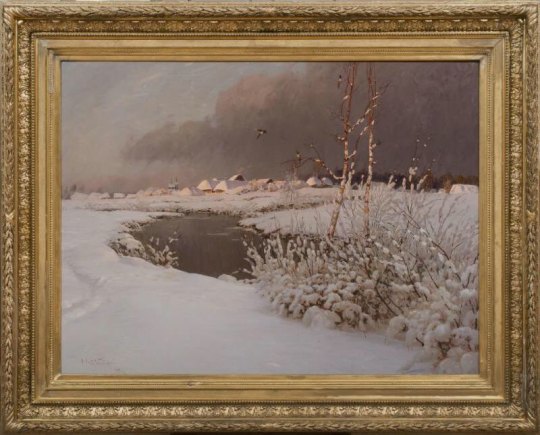

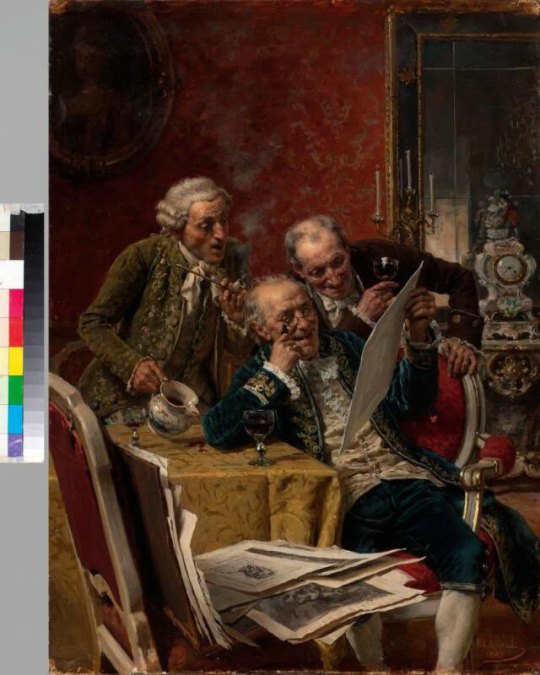
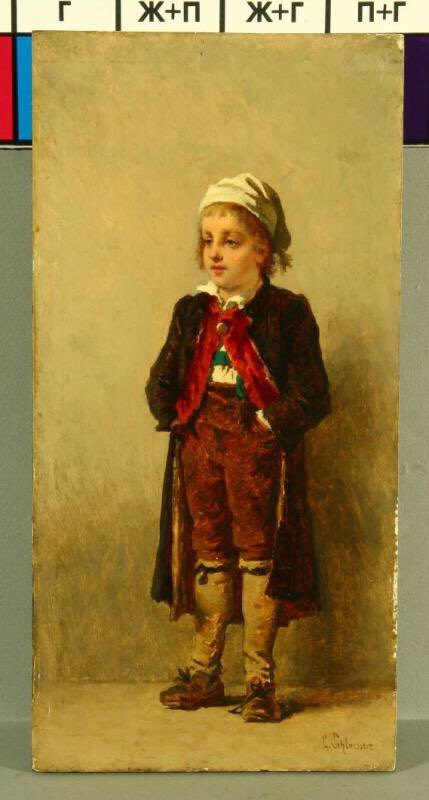

Some of the lesser known paintings of the Palisandre Drawing-Room of Her Majesty at the Alexander Palace in Tsarskoe Selo In the Palisandre Drawing-Room of the Empress, there was a multitude of paintings, watercolours, pastels and prints. Most of the paintings were hung along two particular walls - the wall leading to the Lilac Cabinet and the wall leading to the Maple Living-Room. The two most well-known of these paintings still reside with GMZ Tsarskoe Selo and have recently been reframed with recreated wooden frames to match the originals which were lost during the Second World War. Gosfond (The State Museum Catalogue of the Museum Fund in Russia) has a wealth of a collection that spans the entire country with a range of objects ranging from drawings, photographs, sculpture, paintings, portraits, miniatures, vases, etc. GMZ Pavlovsk is the major keeper of what was evacuated from the Alexander Palace during the war. In its collection is 1,078 items which vary from paintings, fabric hangings from the rooms, sculpture, art glass, etc. Of these, I was able to find six of the paintings which up until 1941 hung on the walls of the Palisandre Drawing-Room of Her Majesty. From the 1928 Catalog on the Alexander Palace-Museum (Furnishings) by I. Yakovlev and translated generously by Stephen R. de Angelis (available via www.bookemon.com), are the titles that correspond to these six paintings: "Lake early in the morning with the shore in the fog." Circa. 1896. Volkov, Ef. (b. 1843). At-will student of the Academy of Arts from 1867. "Winter Landscape. A village on a river during sundown." Circa. 1895. Dubovskoi, Nik. (b. 1859). Member of the Academy of Arts from 1877. "Moscow. Neskuchnoe - Alley and Park." Circa. 1896. Krachovskii, I.E. (1854-1914). Russian School.
"Lovers of Art (three members of the Court - Gentilhommes) in dress of the era of Louis XV look at paintings." Gilardi, P.S. Date Unknown. "Boy with hands in his pockets." Schloesser, G. Date Unknown. "Young girl playing the flute and a heron dancing around her." Svedomskii, P.A. (1849-1904). Dusseldorf Academy of Arts. Circa. 1897. ________________________________________________________________ Please enjoy these images, and If you'd like to share them elsewhere, you can download them yourself and if you do so, PLEASE remember to credit the institution/news source/author/photographer - in this case Gosfond, GMZ Tsarskoe Selo, GMZ Pavlovsk and V.I. Yakovlev, and Stephen R. de Angelis, appropriately! Thank-you. ________________________________________________________________ Sources: Gosfond (State Museum Catalogue of the Museum Fund of Russia) GMZ Tsarskoe Selo (Tsarskoe Selo State Museum Reserve) GMZ Pavlovsk (Pavlovsk State Museum Reserve) ”The Alexander Palace in Detskoe Selo,” - V.I. Yakovlev. Circa. 1927 (Republished in 1928), translated by Stephen R. de Angelis. (2015) Link of courtesy: www.goskatalog.ru https://www.bookemon.com/book-profile/yakovlev-the-alexander-palace-1927/545267 Also, if anyone is interested, this is the original text which Mr. de Angelis translated from, which is free for download via this website: http://elib.shpl.ru/ru/nodes/42498-yakovlev-v-i-aleksandrovskiy-dvorets-muzey-v-detskom-sele-ubranstvo-vmesto-kataloga-detskoe-selo-1928#mode/grid/page/27/zoom/1 (This is the republished catalogue, Circa. 1928)
#alexander palace#gmz tsarskoe selo#gmz pavlovsk#tsarskoe selo#romanov#imperial russia#empress alexandra feodorovna#palisandre drawing room#paintings#fine art#russian archival material#gosfond#obscure books
8 notes
·
View notes
Text
What is the background of Katarzyna Kobro.
A strong lady, Katarzyna Kobro is a sculptor. Moscow Academy of Art was her place of study. Sculpture and architecture were her areas of expertise. Art should incorporate spatial rhythm. Having grown up in a mixed family of Russians and Germans. In the 1920s, the Kobro family moved to Poland. There, she produces many of her most important works. A concept of spatial composition "was developed for industrial and man-made products.She used prefabricated elements along with constructivism.Individualism did not appeal to her, he claimed.It is not surprising that Katarzyna Kobro received a Google Doodle this year. She polarized critics in her native country.In celebration of Kobro's birthday, a portrait of the artist appeared on Google.
Childhood Memories of Katarzyna Kobro
cThe importance of multiculturalism in family life.Nikolai Alexander Michael von Kobro is her father.
German-born from a Baltic family.She was raised by Evgenia Rozanov. Her early years were spent in Riga.From 1917 to 1920, the family lived in Moscow after moving there in 1915.In Moscow, she studied at the School of Painting.
Besides being an architect and a sculptor, she is also a designer.The Moscow Union of Artists was one of her associations.It was in 1920 that the couple were married.The early 1922s saw Kobe fleeing to Poland. Achieving Polish citizenship.
Describe Katarzyna Kobro's career as an artist
Szczekociny, a small town in Poland, became their home.A new home was found in Koluszki. They were teachers.Kobro co founded the Praesens Group a few years ago.Bohdan Lachert and Szymon Syrkus. Their departure from the group occurred in 1929.
Content disagreements led to the disagreement.It was organized as a group of "Revolutionary Artists" or just "Real Avant-garde". In "Od", she established a museum named after her named "The Museum of Katarzyna Kobro Art." In 1932, they formed Abstraction Création.
Katarzyna Kobro's artistic style
One of the most progressive avant-garde artists of the interwar period was kobro Katarzyna artist.A constructivism-inspired style. As far as aesthetics were concerned, she was uninterested.The concept of subjectivism and individualism.Instead, he posited that form serves a purpose.A work of abstract art was her goal.Analyzed universal goals and discovered their rules.
As a way of organizing space. She tried to avoid being divided into enclosed and excluded areas. She created a sculpture based on the idea of infinity. Without reference. A coordinate system's origin, for example. That's better. As much as possible, the work should coexist with space.
Katarzyna Kobro: What happened to her?
Sculptors and painters have "been influenced by Katarzyna kobro spatial composition. Including Belgian sculptors and some other artist. Mercury's crater carries Kobro's name. The International Astronomical Union defines the South hemisphere as the southern hemisphere. In December 2012.
A Google Doodle on 26 January 2022 reclaimed her Polish identity after the war. This has resulted in. A six-month sentence for Katarzyna Kobro Wikipedia "was imposed on her. But she avoided jail time after appealing. She died of cancer the following year after "being diagnosed.
Conclusion
As a sculpture of the interwar era, hers was one of the most important. A very hardworking woman, Katarzyna Kobro. In her works, she shows technical perfection and sensitivity. She is credited for pioneering the field of female sculpture. When she was alive. Her work has been credited to many famous artists. Artists collaborated with Kobro when he lived in Paris.
Alberto Giacometti and Henry Moore are two examples. Sculptures in her early work were heavily influenced by Cubism and constructivism. Her sculptures have an organic style. Abstract shapes were combined with human forms. It is easy to find Kobro's work in many renowned museums throughout the world.
#katarzyna kobro#katarzynakobro#katarzyna kobro website#katarzynakobro official website#katarzyna kobro arts
2 notes
·
View notes
Photo


1. Portrait of a Boy in a Coloured Shirt, 1909, Ilya Mashkov.
Medium- oil,canvas. https-//www.wikiart.org/en/ilya-mashkov/portrait-of-a-boy-in-a-coloured-shirt-1909.
2. Self-portrait, 1911, Ilya Mashkov. Medium- oil, canvas.
Ilya Mashkov (Russian: 1881 – 1944) was one of the most significant and characteristic painters of the circle of "Jack of Diamonds" (Russian: Бубновый Валет).
He was born in the cossack village Mikhailovskaya-on-Don (near Volgograd) in a peasant family. in 1900 he attended the Moscow School of Painting, Sculpture and Architecture, whose teachers included Konstantin Korovin and Valentin Serov. In 1909 he was expelled from the school because of his artistic free thinking. He traveled much as a student, visiting a number of the countries of West Europe, and also Turkey and Egypt.His work reflected the colour revolution and innovations of Paul Cézanne and Henri Matisse and also contained the full-blooded colour and energy of folk art.
https://en.wikipedia.org/wiki/Ilya_Mashkov
9 notes
·
View notes
Photo
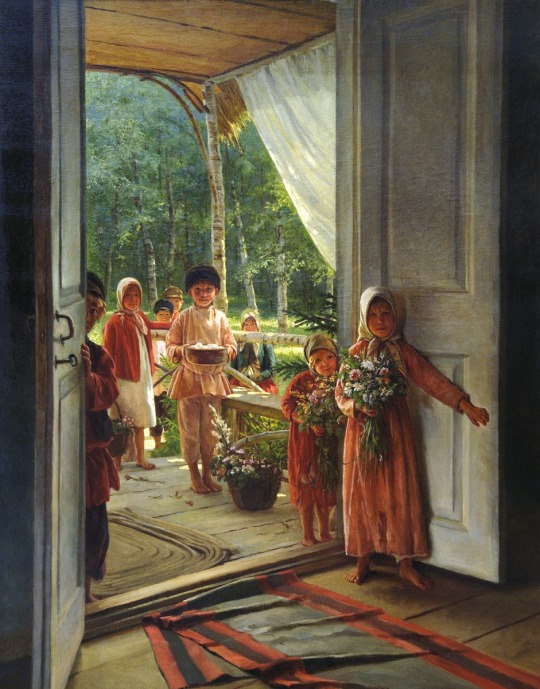
In the Summer, Congratulations by Kirill Vikentievich Lemokh, 1890
Kirill Vikentievich Lemokh, also known as Carl Johann Lemoch (Russian: Кирилл Викентьевич Лемох: 1841–1910) was a Russian genre painter and member of the Imperial Academy of Arts.
Biography
His father was a music teacher from Germany. From 1851 to 1856, he studied at the Moscow School of Painting, Sculpture and Architecture under Yegor Yakovlevich Vasiliev. In 1858, he entered the Imperial Academy of Arts, where he studied history painting with Pyotr Basin and Alexey Tarasovich Markov.
Five years later, in 1863, he participated in what came to be known as the "Revolt of the Fourteen", a protest by those who preferred the Realistic style over the Classical style being promoted by the academy. As a result, he withdrew from the academy with the degree of Artist Second-Class. He joined the Artel of Artists, led by Ivan Kramskoi. Five years later, he entered an academy competition and became an Artist First-Class. From that point on, he earned his living by giving drawing lesson to aristocratic families and built an art studio in Khovrino, where he spent his summers painting.
6 notes
·
View notes
Photo
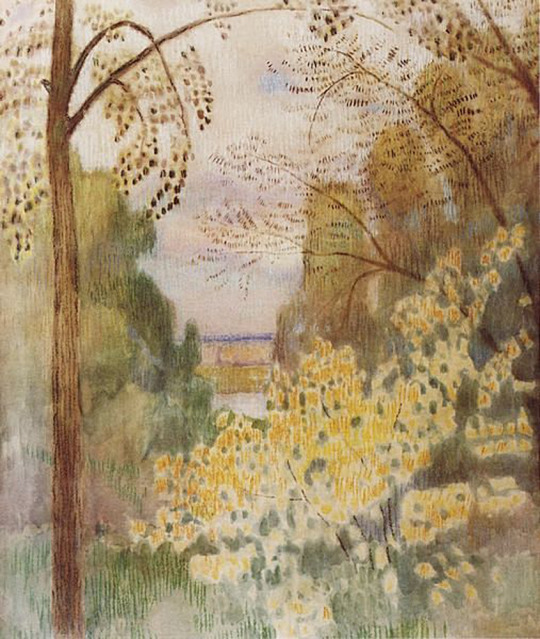
Lost in the forest by Pablo Neruda Lost in the forest, I broke off a dark twig and lifted its whisper to my thirsty lips: maybe it was the voice of the rain crying, a cracked bell, or a torn heart. Something from far off it seemed deep and secret to me, hidden by the earth, a shout muffled by huge autumns, by the moist half-open darkness of the leaves. Wakening from the dreaming forest there, the hazel-sprig sang under my tongue, its drifting fragrance climbed up through my conscious mind as if suddenly the roots I had left behind cried out to me, the land I had lost with my childhood-- and I stopped, wounded by the wandering scent.
[Hazel Bush, by Victor Borisov-Musatov]
• from Neruda’s Nobel Acceptance Speech: “From all this, my friends, there arises an insight which the poet must learn through other people. There is no insurmountable solitude. All paths lead to the same goal: to convey to others what we are...” More: https://www.nobelprize.org/prizes/literature/1971/neruda/lecture/
��� Born Victor Elpidiforovich Musatov in 1870 in Saratov, a city on the Volga River upstream of Volgograd, his family had humble origins. At the age of 14 he entered the local ‘real school’, where his artistic talent was spotted. From there he went to study in the Moscow School of Painting, Sculpture and Architecture at the age of 20, and the following year to the Imperial Academy of Arts in Saint Petersburg, the pinnacle of teaching at the time in Russia. More: https://eclecticlight.co/2020/04/03/agaves-and-the-country-estate-paintings-of-victor-borisov-musatov/
#nobel prize#literature#pablo neruda#poetry#poet#victor borisov-musatov#pastel#art#russian artists#chilean poetry
3 notes
·
View notes